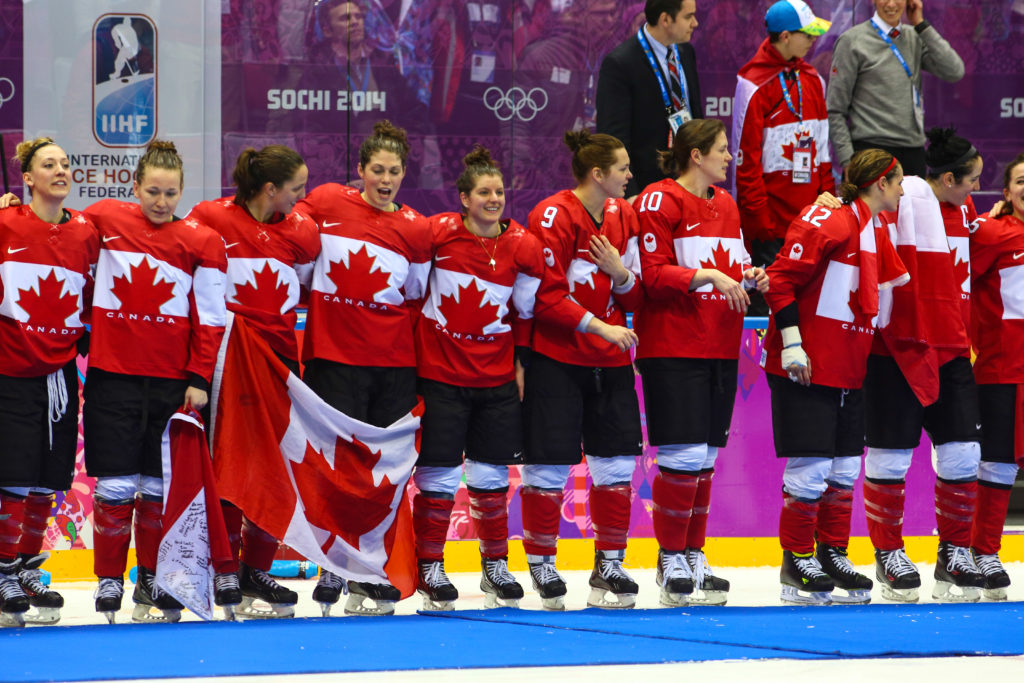On Tuesday, as part of the lead-up to the release of Clockwork, Curses and Coal, I shared a short story which feels like a steam-powered fairy tale on my Patreon and newsletter. That story, “Sisters”, was written by Lisa Timpf and today I am pleased to host a guest post by her about the story behind the story.

“Sisters”: The Story Behind the Story
by Lisa Timpf
You might surmise from the fact that my short story “Sisters” revolves around ice hockey that I’m a fan of the sport. And you’d be right.
I came by my interest in hockey honestly, falling into fandom when I watched the Montreal Canadiens’ march to the Stanley Cup in 1973. An enthusiasm for watching hockey soon transformed into a desire to play the game. Unfortunately, there were no girls’ or women’s ice hockey teams in my home town in southwestern Ontario when I was growing up.
Extrapolating from my own experience, I assumed this state of affairs had existed across the country, and throughout the preceding decades. So while I was studying Sport History at Dalhousie University, I was surprised to run across numerous references to women’s hockey being played in Canada’s Maritime Provinces in the early 1900s.
In fact, the game was enjoyed by women and girls of all ages, ranging from attendees at girls’ schools like Netherwood in Rothesay, New Brunswick, to ladies who formed up town teams. Women and girls embraced the sport with enthusiasm, as this notation in the June 1908 edition of the Tallow Dip, a publication put out by Netherwood, demonstrates:
When we returned from our Christmas holidays we found the river in a perfect condition for skating and for two or three weeks, as soon as the three o’clock bell rang, there was a grand rush for skates and hockey sticks; and in a few minutes the school would be empty of girls and they would be skating on the river, brandishing hockey sticks and crying at the top of their lungs—“There it is! Quick! Follow it up!”
While looking through archived student newspapers and yearbooks of Maritime universities, including Acadia University in Wolfville, Nova Scotia, Dalhousie University in Halifax, Nova Scotia, and Mount Allison University in Sackville, New Brunswick, I found many references to ice hockey being played by university women in the first few decades of the 20th century. One such reference from Mount Allison in 1908 notes, “We are looking forward with great pleasure to the time when we shall again be found skimming on steel-shod feet across the glistening ice in pursuit of the flying rubber disc.” (Allisonia, November, 1908).
City-based women’s teams existed as well, and these attracted a lot of interest. A 1921 match between New Glasgow and Moncton drew 600 fans, and a 1920 game between the Glace Bay ladies’ team and their New Glasgow counterparts saw 1,500 people packing the New Glasgow arena. These attendance figures weren’t a one-off. Newspaper accounts from the time often cite attendance tallies ranging from 500 to 1,500.
As in today’s game, emotions could run high. A reporter commented on a spirited 1910 match, noting, “The play waxed warmer, and two of the players came in collision, and looked so savagely at one another that the referee was right on hand to prevent any trouble.” (Power Collection, Vol. 119, p. 90) A 1931 contest between Kentville and the Halifax Ladies’ Athletic Club at the Halifax Arena also saw lively action: “ ‘Deet’ Balcom, Halifax winger, drew down the house with her rugged playing, several times knocking her opponents spinning with hard checks.” (Power Collection, Vol. 148, p. 52).
Though women’s hockey games drew plenty of fans, not everyone supported the involvement of the “fairer sex” in hockey, or, for that matter, in other sports during the first part of the 20th century. Some among the medical community sounded dire warnings about the potential peril to the reproductive capacity of women who engaged in sports. Others trivialized women’s involvement. Critics viewed women’s involvement in sport as an unwelcome encroachment on activities that had previously been the exclusive province of men and boys.
Perhaps this negativity dissuaded some women. But many others chose to play and compete even in the face of adversity.
It’s partly in honour of the spirited Deet Balcom and her hockey-loving friends, as well as the Netherwood girls who enjoyed the sheer rush of chasing a puck across a smooth sheet of ice, that I penned the story “Sisters.” I liked to think that in a steampunk world, women might embrace the game as enthusiastically as they did in our own—even if they sometimes faced adverse reactions from those who would contest their right to do so.
If you missed the chance to read her story on my newsletter and you’re not a Patreon supporter you’ll be able to check it out on Lisa’s blog (here) in the beginning of March (after Clockwork, Curses and Coal comes out on the 2nd ;)).

